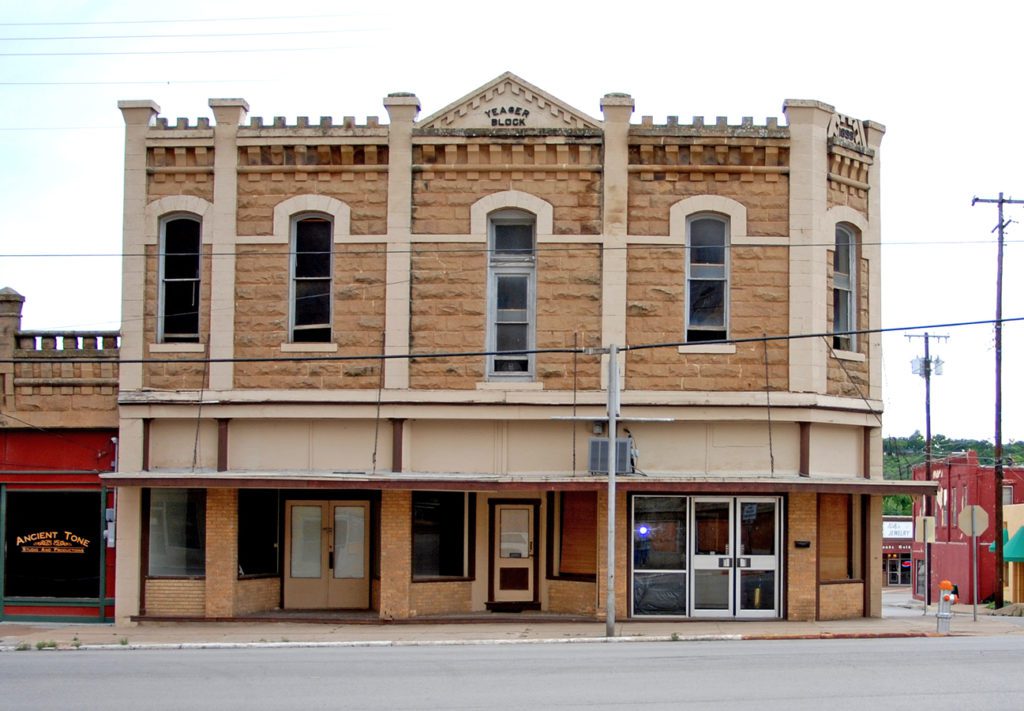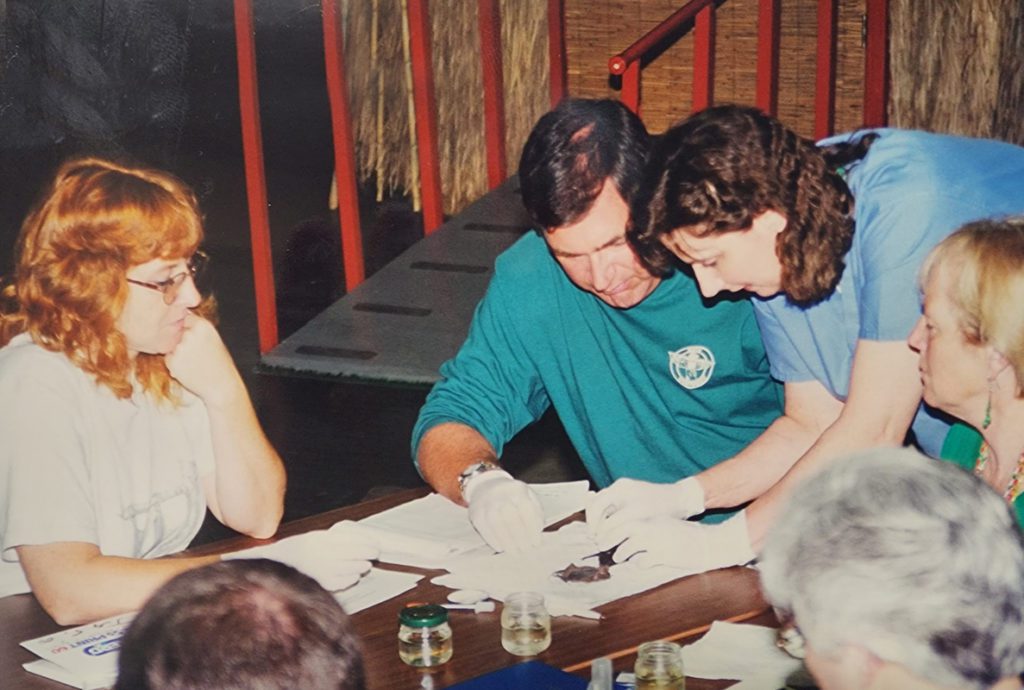BAT CONSERVATION
History has been made. After 10 years of waiting, bats are finally calling the Bat Castle “home”. A man-made structure like our Bat Castle, capable of holding 100,000 bats, has never been attempted before. This sets a precedent for others to follow in protecting bats through a man-made concrete habitat that will last for decades. The story below explains how the idea came to be, as well as the final success.
THE STORY:
Our conservation efforts began in 1992, when Founder and President Amanda Lollar purchased an old building in downtown Mineral Wells, TX in order to save a colony of approximately 30,000 Mexican free-tailed bats. The building was built in 1899 out of hand-hewn sandstone and bats had been occupying a roost in the crawlspace for several decades. Every summer, the mother bats would form a nursery colony there. When Amanda learned that the building owner planned to destroy the bats in order to sell the building, she bought the property.
Over the next two decades many improvements were made to the building, including stabilizing the foundation, adding a new roof, and installing catwalks on the upper floors to reach and rescue orphaned bats. Before these improvements were made, over 6,000 pounds of guano was removed that had accumulated over the decades.

Through careful observation of the colony, Amanda made numerous discoveries about free-tailed bats, including “the song of the Mexican free-tail“, their mating behavior and their unique language. She rescued thousands of bats over the next two decades, and treatments for injuries and ailments were discovered in the process.
In the 20 years that Amanda maintained the wild sanctuary, the colony size increased from 30,000 to 100,000, primarily due to humane exclusions that were provided by Amanda to business owners in the downtown area.
Every summer, as many as 100 to 250 orphans were rescued. Methods of care were were created and streamlined for both the comfort of the bats and the convenience of the rehabilitator. This knowledge resulted in the book The Rehabilitation and Captive Care of Insectivorous Bats.
Eventually, Bat World Bootcamp, instructed by Amanda Lollar (right, standing) and Denise Tomlinson (left), was created specifically for orphan season. This week-long workshop was designed to acquire additional care for the numerous bats who came in each summer while also providing training to animal care professionals. During the 10-years Bat World Bootcamp was offered, over 400 professionals were trained, including wildlife rehabilitators, conservation scientists, biologists, veterinarians and zoologists from every bat inhabited continent in the world. Many of the professionals who learned from us went on to offer training in their own states and countries, furthering our worldwide conservation efforts for insectivorous bats.

Sadly, the building ultimately became unsafe for the bats due to crumbling mortar and numerous other continual repairs. Additionally, the town, which had been in disrepair for years, was finally growing and nearby buildings were being renovated.
Knowing it was time to create a safer habitat, Bat World purchased 13 acres of land nearby and a “Bat Castle” was built for the bats in a private location. The bat castle design was inspired by the wild sanctuary, incorporating preferred roosting areas for the bats. The structure is capable of holding over 100,000 bats. Over the course of the next three years, the bats in the wild sanctuary were slowly and humanely excluded.
Bat World also worked with numerous local businesses who were renovating older buildings that held bat colonies, and offered a safe release for these bats who were losing their homes. While bats have not begun to use the bat castle full time just yet, there is evidence of migrating bats using the castle as a stop-over site.
In 2022, we mounted a large, double-sided bat house, complete with a pup catcher, beside the bat castle. This bat house sits above the tree-line where it can be more easily spotted by foraging bats. The pup catcher is designed to be easily lowered in the event orphaned bats need to be rescued.
READ ABOUT MORE OF OUR CONSERVATION EFFORTS HERE!
.

